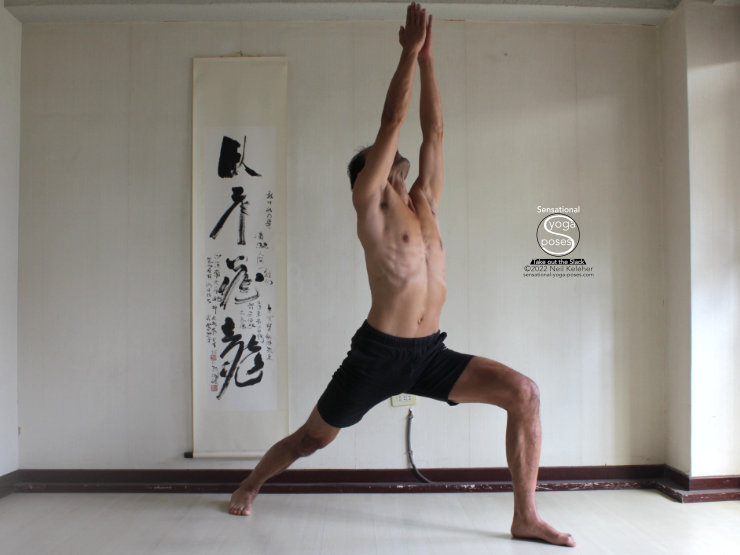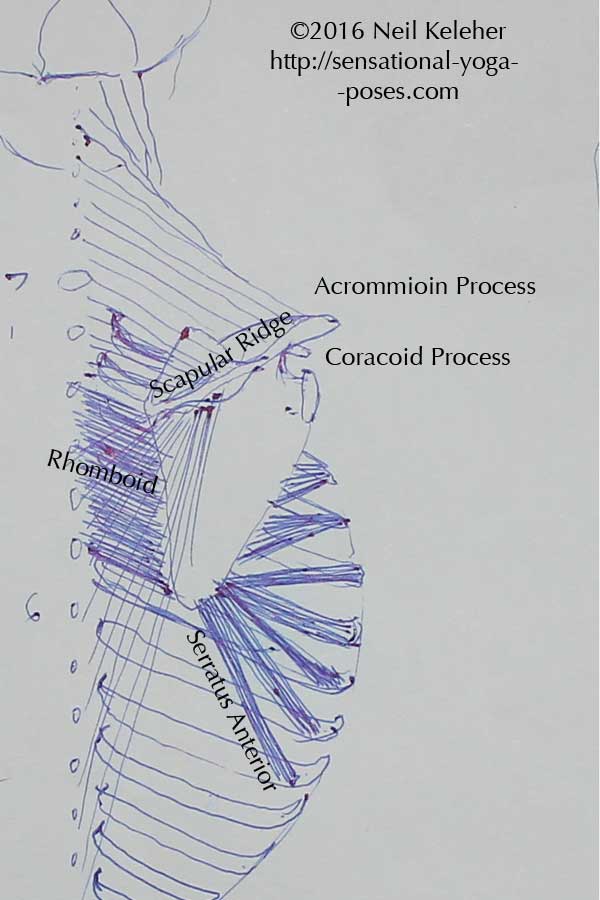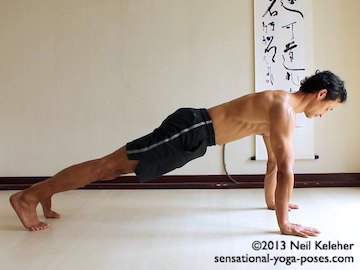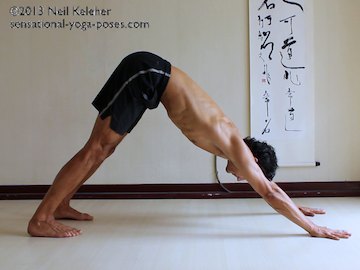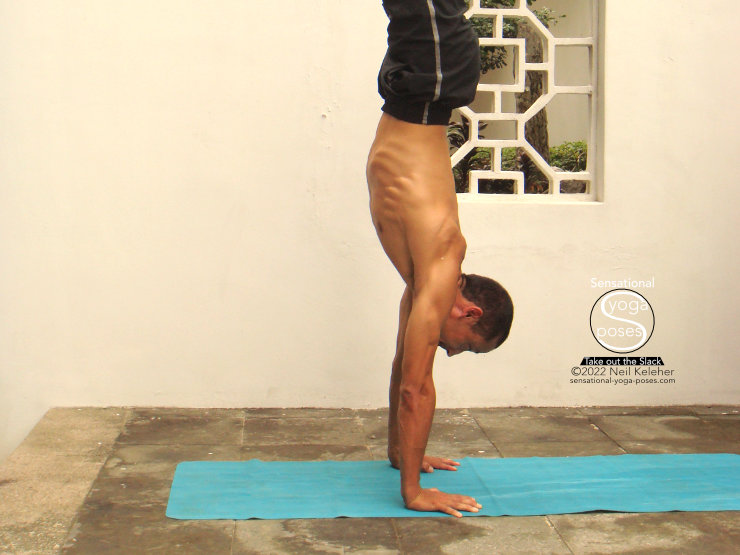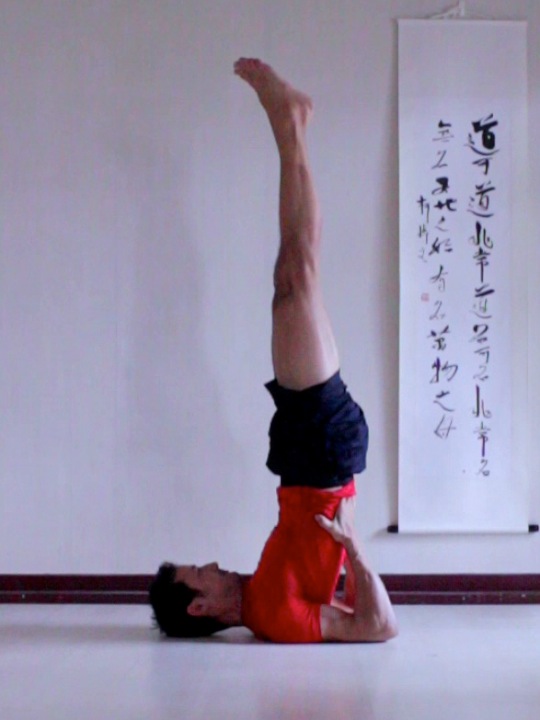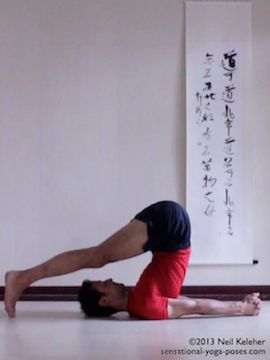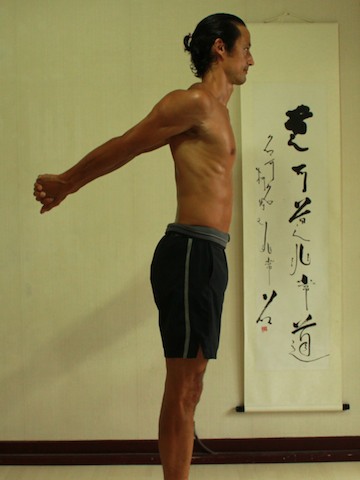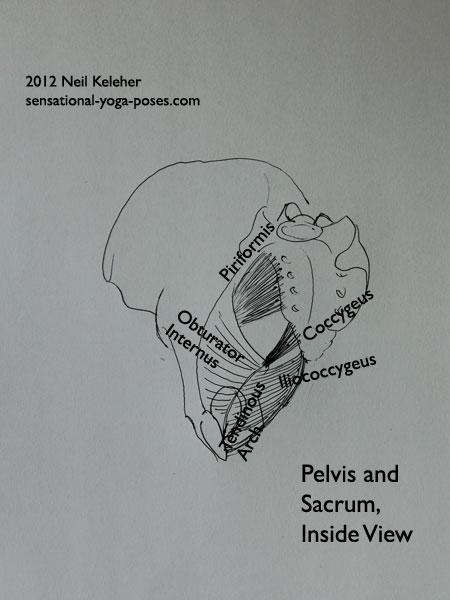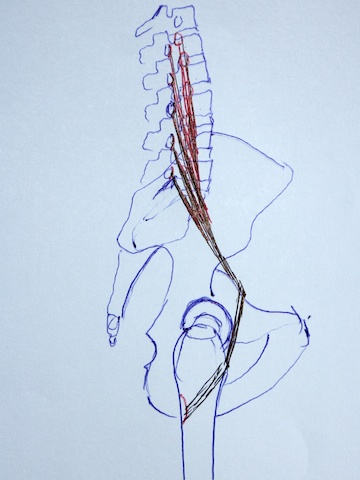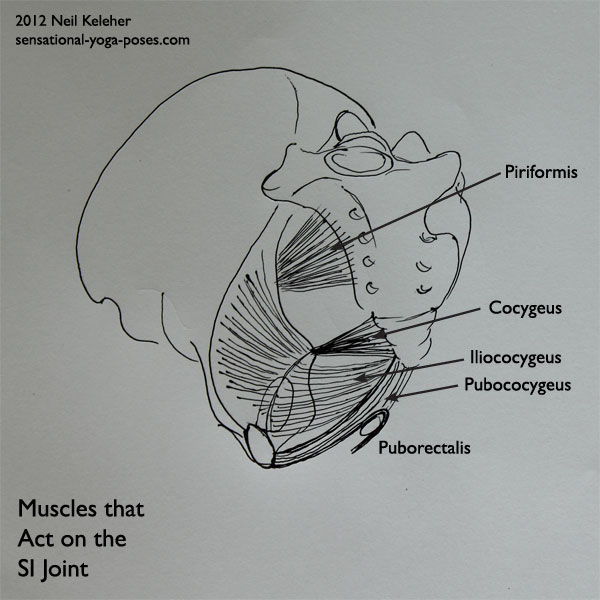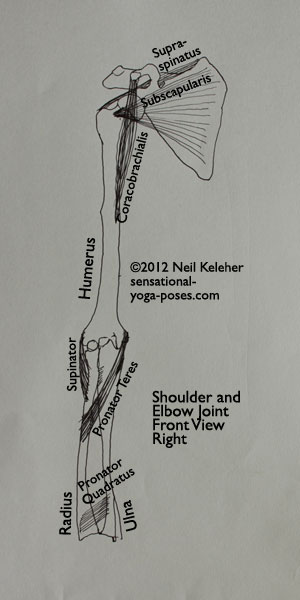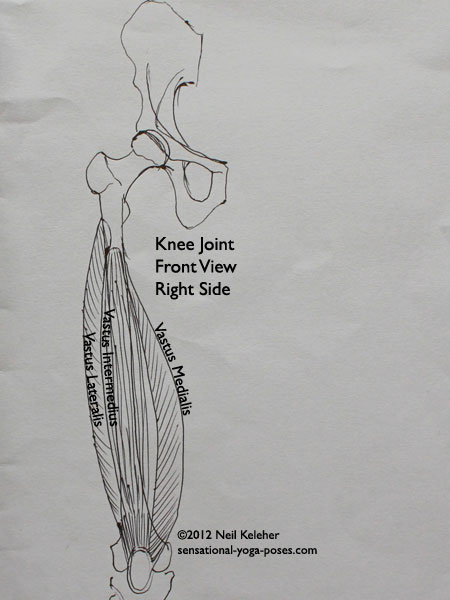Useful Units of Meaning
With regards to experiencing your anatomy, it's a little bit pointless talking about muscle cells and how they work. It's not to say that this information isn't important and that you shouldn't learn about it. However, in the context of yoga, that information isn't always useful.
What is useful is learning bones and points of attachment for muscles. And learning the muscles themselves.
Sensing Our Body (Proprioception)
The technical term often used for "feeling the body" is proprioception. At the very basic level what we can learn to feel (proprioceive) is the activation and relaxation of muscle tissue. Generally we can learn to feel the larger "bulkier" muscles in this way since the sensation of activation and relaxation is easy to discern.
As an example we can learn to feel our buttocks contract and relax and we can also learn to deliberately contract and relax them. We can also learn to feel our spinal erectors contract and relax. Although taken individually the spinal erectors are small and thin, because there are so many of them as a group, their activation and relaxation is easy to feel.
Thinner and smaller muscles aren't so easy to feel because the sensation that is created when they relax or contract isn't so noticeable. However in the case of these muscles what is noticeable and controllable is the bone movements that they drive. A prime example of this is the serratus anterior muscle. This muscle is very thin however it acts to protract (pull outwards) the shoulder blade. As a result deliberately protracting the shoulder blades while focusing on the inner edge of the shoulder blades is one way to consciously control this muscle.
Note that it is easy to create protraction with a contraction of the pectoralis major muscle. However, this muscle is large and easy to feel when it is contracted and so also relatively easy to keep relaxed when protracting.
Another signal that we can notice when activating smaller/thinner muscles like the serratus anterior is a stretching or opening feeling between the shoulder blades.
Tai Ji and other "relaxed" or "internal" martial arts tend to focus on the use of these smaller muscles to move the body. Ideally we learn to feel and control both the larger muscles and their smaller thinner counterparts.
Isolating, Integrating, Sensing and Controlling
The control of tension (which can lead to a state of tensegrity) is the key to isolating, integrating, sensing and controlling the parts of the body.
To create stability in a joint we can use muscles against each other or against some external resistance. In both cases, to create stability (as opposed to movement) the muscle force should be equal to the force it is resisting.
In terms of feeling and controlling our relationship with external bodies (including the earth) pressure awareness is key. This is covered in more detail in the section on yoga balance poses.
The actual state of being when we have just the right amount of tension throughout our body so that we can feel what is happening now as well as instantaneously respond could be called tensegrity.
Shoulder Anatomy
Personally when I first started yoga, and for a long while afterwards, I was only vaguely aware of my shoulder blades. They used to wing out alot and still do when I'm not sitting with good posture.
I began to learn about the serratus anterior muscle and the trapezius muscle and how they can help in poses where the arms are either straight ahead or above the head.
As I began exploring handstand and down dog and even headstand I began to explore scapular awareness exercises that can be used the develop conscious control over the serratus anterior and trapezius muscles. I then used these shoulder exercises as part of a preparation for poses like plank pose, Warrior 1, Down dog, Handstand and even Wheel pose.
At one time I was even using a very simple shoulder exercise to teach students how to relax the trapezius muscle. (I'd forgotten about it for a long time.) Big tip for relaxing the trapezius, keep your neck straight and you head pulled back as you do this shoulder exercise.
Meanwhile I learned how the rhomboids can be used in positions like shoulder stand and plow pose to help bring the shoulder blades together.
Even later I began learning about the pectoralis minor and how it can be important in arm positions like that used in Prasaritta Padottanasana C.
The Spinal Column
One way to learn the spine is to develop awareness of the muscles that work directly on the vertebrae, including the spinal erectors, multifidus and Understanding the psoas.
You can also control the spine indirectly using the pelvis, ribcage and skull as levers. If you have problems with ribcage awareness or mobility then read about improving thoracic mobility.
The muscles that act on these include the obliques and intercostals, Levator Costarum, diaphragm and rectus abdominus muscles.
Another important structure relative to the spine, but also to the arms and legs is the Thoracolumbar Fascia. You could think of it as tying all of these elements together. It even has relevance to SI joint stabilization. The Sacrotuberous ligament can be important in this regard also.
Drawing Your Anatomy (and Learning Bit by Bit)
All of the anatomy drawings you see on this website have been drawn by myself. Try drawing your anatomy if you want an easy way to better understand it. You may find that it helps your yoga practice. Drawing, or learning to draw your anatomy, look for relationships and you try to capture those relationships on a piece of paper. And initially your drawings might not be that good. But that's alright. You look and learn and then you draw again.
I do the same thing with Chinese calligraphy. I practice over and over again.
One key thing to avoid disappointment (whether trying to learn to write Chinese characters or trying to draw parts of the body) is to focus on drawing isolated elements.
I focus on the shoulder blade or the side view of a pelvis until I get it right. And then I move on to something else so that I rest from what I've done. I do the same thing with calligraphy, and you can do the same thing when actually doing yoga.
Do a pose. Study it during or afterwards and ask yourself how it can be made better or ask yourself which relationships you don't understand. You can then work on understanding that particular relationship next time you do the pose.
Leg, Hip Joint and Pelvic Anatomy
Other element to understand and be able to feel in yoga anatomy is the pelvis, hip joint and even the SI joint.
Learning to feel your pelvis can be helpful because with it you not also help to control your center of gravity, you also control the base of your spine. With deeper awareness of the pelvis, learning it's landmarks you have a reference for all of the muscles that attach to it. And that leads to the hip muscles, including the psoas major, which doesn't actually attach to the pelvis but does cross it as well as the other hip flexors (which bend the hip forwards) and hip extensors like the gluteus maximus (which bend it backwards.)
Macro Movements and Micro Actions
One of the keys for doing yoga is knowing the possibilities of each joint.
If you are doing your own practice, when you know the possibilities for each joint you can experiment to see what helps best. There are macro movements such as having the leg forwards or back, in hero pose or lotus etc. But there are also micro actions that you can do that don't alter the position but do change the feel of the pose ideally making it feel more integrated or even just more comfortable.
At the hip joint three actions that you can do are compressing it, opening or creating space within it and also simply relaxing it. Two other actions are internally rotating it and externally rotating it. These micro actions are actions that you can do whether the macro position of the thigh is internally rotated such as in hero pose or externally rotated such as in lotus pose or pigeon.
In all cases these are actions or movements that you can learn to feel. You can either learn to feel the bones moving or you can feel the muscles that do the movement either contracting or relaxing. Ultimately you learn to feel both. In either case, when you are able to focus on feeling your body and responding to instead of thinking about what you have to do, then you are possibly doing yoga.
The SI Joint and Mula Bandha
As for the SI joint, I'm still exploring that but from what I understand so far, mula bandha and the pelvic floor muscles may be the key controlling elements for more delicate positioning of the sacrum relative to the pelvis.
Mula bandha might be useful in maintain the integrity of the pelvis at the SI joint and also a key component in helping to manage backbending and forwards bending of the spine.
Elbows and Knees
Two final body parts that I'll mention here are the elbows and knees.
Until relatively recently I only paid passing attention to these body parts. You may find that understanding these parts, and deliberately activating the muscles that act on them can help your yoga pose.
In the case of the elbows I found that activating them and deliberately rotating them can make poses like handstand easier. If nothing else it gives something else to focus on while doing this inverted yoga pose.
As for feeling the knee joint, and deliberately activating them, well that may help in making your hamstring stretches a little bit more easier.
Published: 2017 06 23
Updated: 2021 01 28
